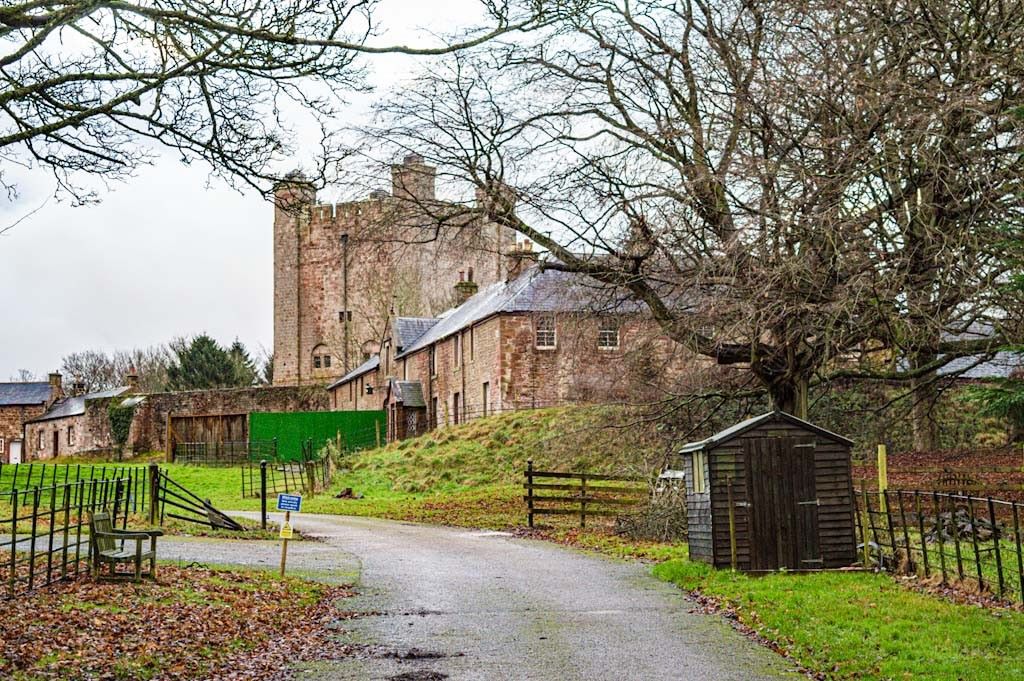Appleby Castle

Appleby Castle Details
Appleby Castle started as a motte and bailey but was refortified in stone in the 12th century. An extensive house was constructed in the bailey which was repeatedly remodelled. It was occasionally open to the public, but was put up for sale in 2024.
- Closest To: Appleby-in-Westmorland
- Access: Occasional Access
- Grid Reference: NY685199
Appleby Castle is a large and impressive castle said to have been founded in the very early 12th century by Ranulph de Meschines, later Earl of Chester, when he acquired the lordship of Appleby by marriage to Lucy of Bolingbroke. However he was Lucy’s third husband, and each of her previous husbands had also had much contact with the region. First was Ivo de Taillebois, who was the steward of King William II Rufus, and who was granted the barony of Kendal together with Ribblesdale and Lonsdale as well as Appleby. After Ivo died in 1094, Lucy married Roger de Roumare, producing a son William who became Baron of Kendal. After Roger died in 1097/98, but before 1101 she married Ranulph. Ranulph transferred his allegiance smoothly to King Henry I, and was acting lord of Cumberland and Westmorland after 1106. The substantial motte and bailey fortress occupied the west bank of the River Eden, and guarded the settlement to the north which lay in a loop of the river. The castle was eventually provided with two or even three baileys, but the principal one faced east, with the hall erected at the end to overlook the river. When Ranulph stood to inherit the wealthy and powerful earldom of Chester in 1128, he was forced to surrender his northern lands by King Henry, and was then part of the lands dominated by King David of Scotland after the death of King Henry. In 1139, King Stephen accepted this fait accompli, and granted most of the north to Henry, the son of King David of Scotland. It was back in the royal hands of Henry II when it was surrendered to King William of Scotland in 1174 and sacked. It was perhaps in response to this invasion that the motte was reduced in height and the great tower-keep constructed – it is roughly dated to the 1170s. An additional storey was added to the keep at the end of the 12th century, and extensive additions and rebuilding work took place in the 13th and 14th centuries, under the Vipont family (from 1203) and Clifford family (from 1264).
Under the Cliffords, a new Great Gatehouse was erected before 1422, the main residential range was rebuilt substantially in 1454, but by 1539 it was described as being in ruins. However, it is clear that the castle remained habitable as King James VI stayed here in 1617. During the Civil War Appleby Castle was held for the king, and was besieged, following which it was dismantled to render it indefensible. Between 1651 and 1653 the castle was restored at the instruction of the Lady Anne Clifford, Countess of Pembroke, who restored several of the ruined Clifford castles in the area, and this work was continued by the Earls of Thanet who made it an extensive mansion. The upper parts of the keep were altered, the mansion area was rebuilt in 1686 and the north-west wing was added in 1695. Parts of the castle have been renovated since, with walls repaired and new works carried out in the 18th and 19th centuries. Under the previous owner, the castle was open to the public occasionally, and it was placed for sale in 2024. At the time of writing it is still being marketed as a wedding and corporate venue , and offers tours by advance booking.
Become a supporter of my work to access a more detailed history